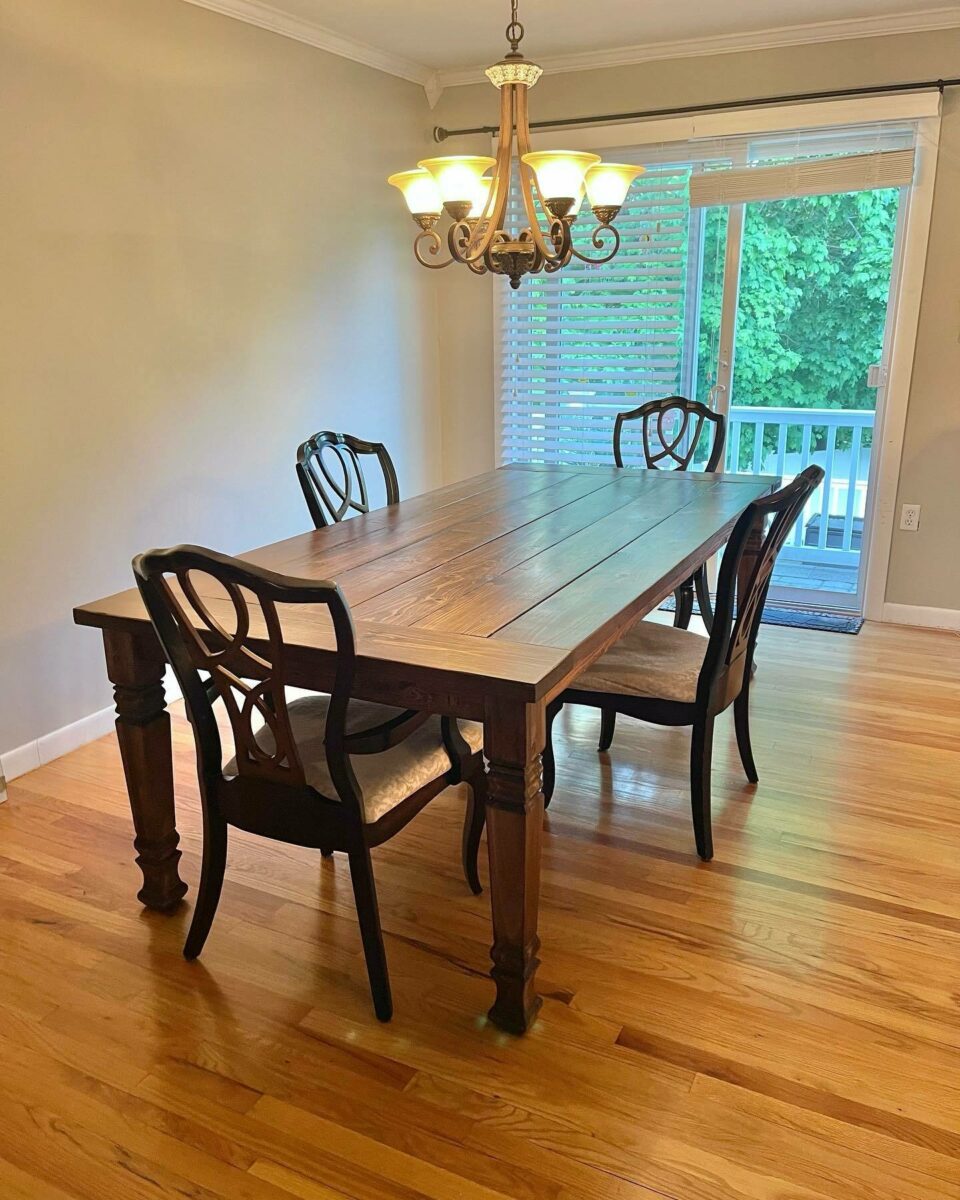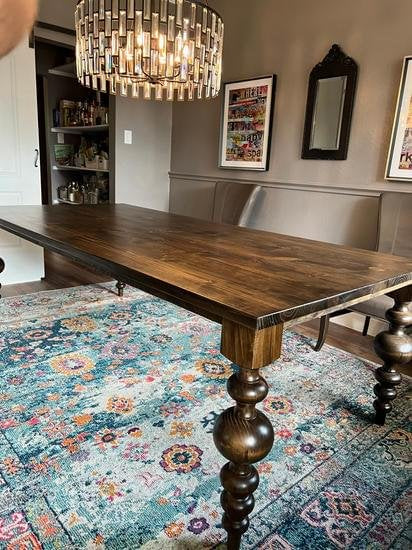From Traditional to Modern: Locate the Ideal Dining-room Table Legs for Your Design
The choice of eating room table legs plays a pivotal duty in defining the general character of your space, bridging the space between traditional craftsmanship and modern appearances. While traditional styles such as cabriole and turned legs stimulate a sense of classic class, modern styles like hairpin and geometric options provide a chance for striking aesthetic rate of interest. Assessing the appropriate equilibrium between these styles needs a nuanced understanding of your existing décor and individual preference. As you consider these components, the question continues to be: exactly how can you seamlessly integrate these diverse leg styles to develop a harmonious eating experience?
Understanding Table Leg Styles
The variety of dining-room table leg styles can dramatically influence both the aesthetic appeals and performance of the area. Each leg style contributes one-of-a-kind functional features and aesthetic components, catering to varied layout choices and usage needs. Understanding these styles is critical for picking the right eating table that lines up with your total indoor layout vision.
As an example, conical legs supply a clean, timeless look that can enhance a space's beauty, while stand bases supply stability and optimize legroom, making them excellent for smaller sized spaces. Barrette legs, a trademark of mid-century modern-day design, introduce a commercial style, permitting an airy, open feeling. Likewise, trestle legs stimulate rustic appeal, providing durable assistance and a sense of timelessness.
Wooden legs can bring heat and texture, whereas metal choices often communicate a streamlined, contemporary vibe. Eventually, recognizing table leg styles is vital for developing a cohesive eating area that shows individual style while guaranteeing usefulness and convenience.
Typical Table Leg Options
When choosing dining-room table legs, conventional choices commonly personify timeless beauty and craftsmanship. These styles reflect a rich heritage and a commitment to high quality, making them ideal for those that value traditional looks.
One of the most renowned conventional leg designs is the cabriole leg, characterized by its graceful curved form. This layout usually includes decorative makings and is most commonly found in Queen Anne and Chippendale furniture. One more popular choice is the transformed leg, which boasts a series of smooth, rounded shapes that provide a classic look while maintaining security.
In addition, the straight leg, while simple, provides a unadorned and durable structure that can blend flawlessly with a selection of tabletop designs. For those drawn to ornate detailing, claw-and-ball feet legs stimulate a feeling of magnificence and can work as a spectacular focal point in any eating area.
Finally, pedestal bases, although not purely legs, supply an alternate conventional choice that enables sufficient legroom and can be wonderfully carved. Each of these typical leg designs adds to the overall setting of a dining room, weding function with visual allure.

Modern Table Leg Designs
Modern table leg styles offer a varied range of designs that emphasize ingenious products and clean lines. These layouts frequently focus on performance while offering as striking focal points within an eating space. Minimalist aesthetic appeals prevail, with legs crafted from materials such as steel, glass, and engineered wood, which add to a modern and visit here airy feel.
One preferred style is the barrette leg, characterized by its slender, conical structure that provides stability without frustrating the tabletop (dining room table legs). This style is usually discovered in mid-century modern-day furnishings and can effortlessly match different eating table shapes. One more fad is the usage of geometric shapes, where legs might tackle asymmetrical or angular types, including aesthetic interest and a touch of artistry

Mixing Designs for Special Areas
Typically, house owners look for to develop special dining spaces that reflect their individual design by blending various layout aspects. This method enables the incorporation of varied appearances, causing a harmonious yet distinctive see it here setting. For instance, pairing a rustic wood table with smooth, modern steel legs can produce a captivating comparison he has a good point that boosts the space's general appeal.
Furthermore, incorporating vintage table legs with contemporary table tops can evoke a feeling of history while keeping a modern perceptiveness. Such combinations not just showcase specific taste however also motivate creativity, enabling property owners to curate a room that feels both individual and inviting.
Color plays an essential duty in this blending procedure; selecting table legs that match or contrast with the existing color design can improve aesthetic passion. As an example, whitewashed legs can soften the daring of a dark table surface, creating a well balanced aesthetic.
Tips for Selecting the Right Legs
Choosing the right table legs is vital for accomplishing both functionality and visual allure in your eating room. Begin by taking into consideration the total design of your space. Conventional settings gain from legs that feature elaborate carvings or transformed layouts, while modern spaces may call for sleek, minimalist designs.
Following, assess the height and security of the legs. dining room table legs. Conventional eating tables vary between 28 to 30 inches in height, so make certain the legs enhance this dimension for convenience. Additionally, durable materials, such as hardwood or metal, can improve security and longevity
Evaluate the leg shape as well-- choices include right, tapered, or stand designs. Straight legs provide a traditional look, while tapered legs can add a touch of elegance. Pedestal bases offer adequate legroom and are ideal for smaller spaces.
Conclusion
In summary, selecting the ideal dining room table legs needs mindful consideration of both contemporary and standard styles. Traditional options such as cabriole and transformed legs supply ageless sophistication, while contemporary designs like barrette and geometric forms supply a modern touch. By harmonizing leg style, elevation, and product with the general design, a cohesive and welcoming ambience can be accomplished. Ultimately, the chosen table legs need to show the desired visual, improving the dining experience within the space.
The range of eating space table leg designs can substantially affect both the aesthetic appeals and capability of the room. Inevitably, comprehending table leg designs is necessary for creating a natural dining location that reflects personal style while making sure practicality and comfort.One of the most famous traditional leg styles is the cabriole leg, identified by its graceful rounded shape. Straight legs provide a timeless appearance, while tapered legs can add a touch of sophistication.In summary, choosing the excellent dining space table legs calls for careful consideration of both modern and standard designs.